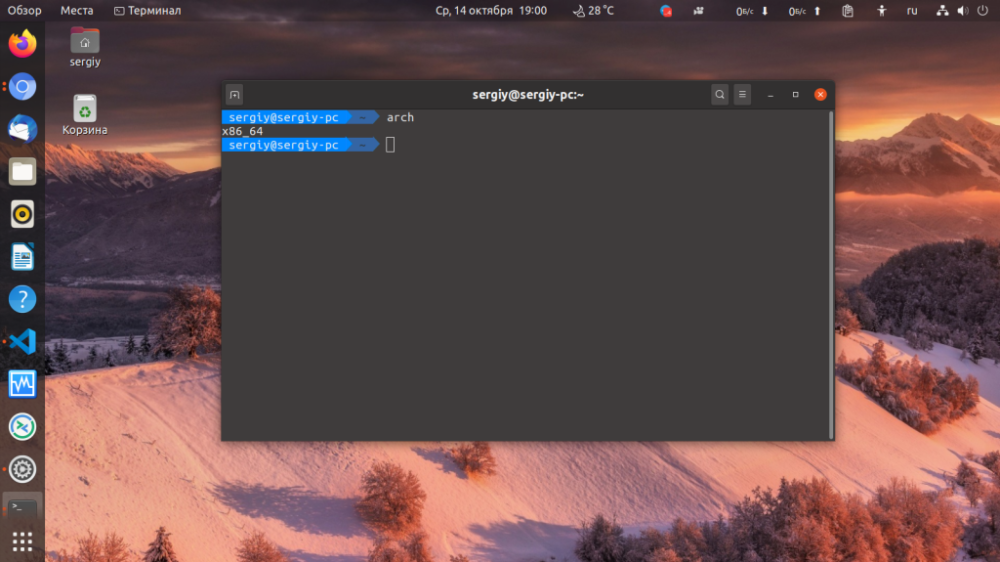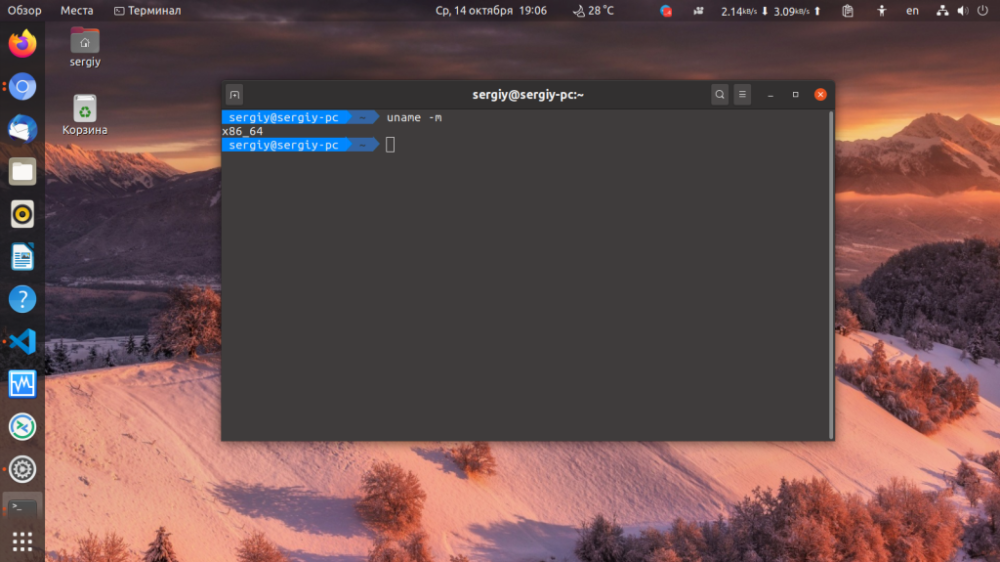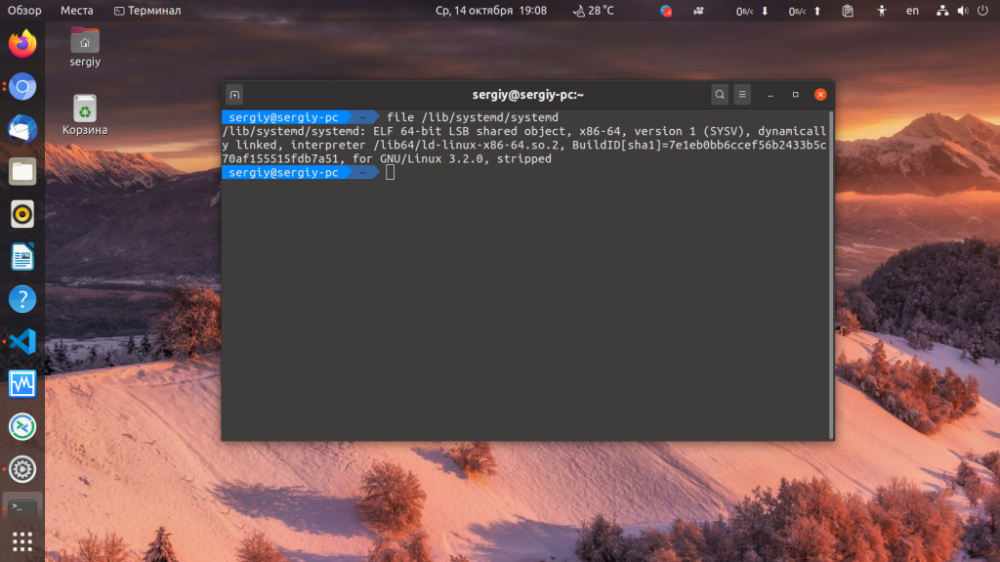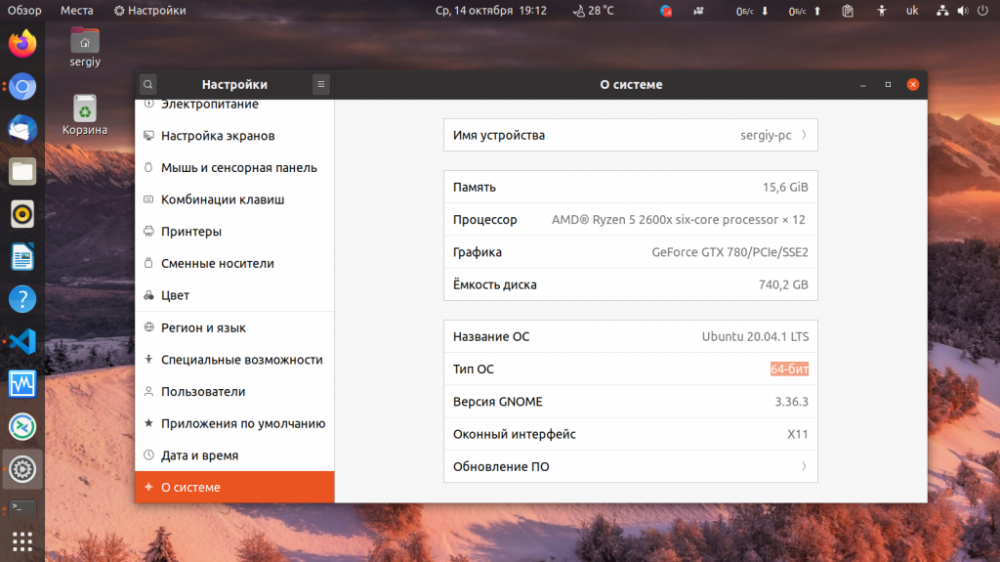Finding out the Linux bitness
- Main
- Knowledge base
- Finding out the Linux bitness
OS bitness is required for the instruction set for the processor, these instructions will be used to work with the data and memory of the PC. There are two bit sizes - i386 (x32-bit) and x86_64 (x64-bit). x32-bit is obsolete and supports working with no more than 4 GB of RAM. x64-bit is more modern and is used everywhere. All processors support both architectures, but there are Linux distributions that no longer work together with x32-bit.
See the system's bitness
The easiest way to find out the bitness of Linux is to use arch.
The utility is executed like this:
$ arch
There is another command that outputs the Linux kernel architecture if you pass the -m option to it:
$ uname -m
Another file command is a way to provide information about the files in the file system. Executable files view the architecture. By looking at the architecture of a system file, you will also find out the OS bitness. For example:
$ file /lib/systemd/systemd
So you can find out the OS bitness and Settings, in Ubuntu there is a specialsection About System:

One of the items indicates the system's bitness. Please note that if the system is x64, it is able to run all applications that are designed to work with x32-bit OS. But if the OS is x32-bit, it will not be able to run x64-bit programs.






























